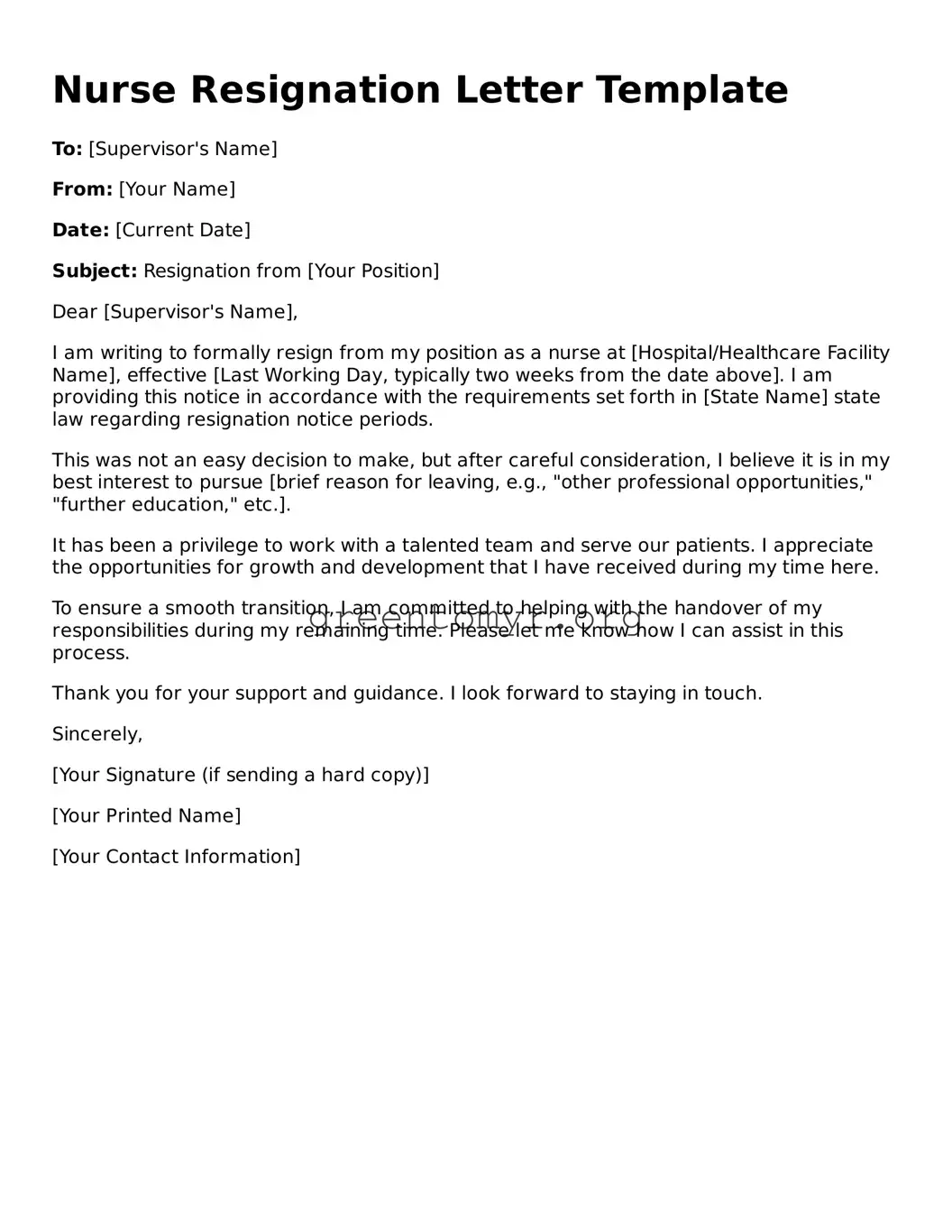Nurse Resignation Letter Template
To: [Supervisor's Name]
From: [Your Name]
Date: [Current Date]
Subject: Resignation from [Your Position]
Dear [Supervisor's Name],
I am writing to formally resign from my position as a nurse at [Hospital/Healthcare Facility Name], effective [Last Working Day, typically two weeks from the date above]. I am providing this notice in accordance with the requirements set forth in [State Name] state law regarding resignation notice periods.
This was not an easy decision to make, but after careful consideration, I believe it is in my best interest to pursue [brief reason for leaving, e.g., "other professional opportunities," "further education," etc.].
It has been a privilege to work with a talented team and serve our patients. I appreciate the opportunities for growth and development that I have received during my time here.
To ensure a smooth transition, I am committed to helping with the handover of my responsibilities during my remaining time. Please let me know how I can assist in this process.
Thank you for your support and guidance. I look forward to staying in touch.
Sincerely,
[Your Signature (if sending a hard copy)]
[Your Printed Name]
[Your Contact Information]
